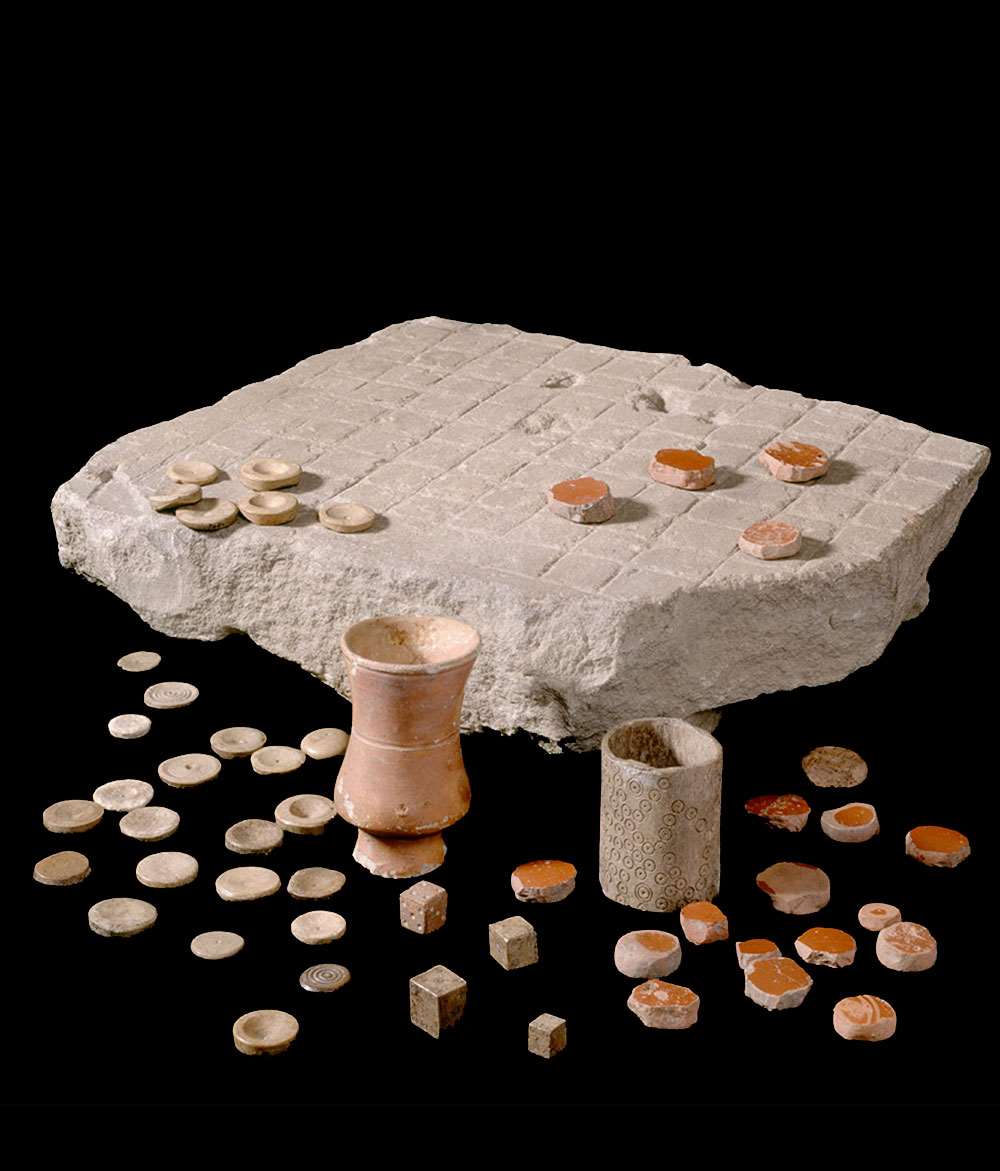GAMING ON THE ROMAN FRONTIER
There are 689 gaming counters and 11 fragmentary gaming boards in English Heritage’s collection from the forts and towns along Hadrian’s Wall alone. From these discoveries, we get a good sense of how Roman soldiers, civilians and families whiled away their spare time. Counters take many different forms: some slippery, bright glass, others carefully worked bone or pottery fragments rounded to an almost-circle. Many of the boards are fragmentary, so we cannot be certain of their original dimensions, which would allow a fuller understanding of gaming rules. It’s also possible that games would have been played on hastily etched boards on the ground or on buildings.
So what did they play? The Roman writers, Varro and Ovid, both mention a strategy game called latrunculi which may have been similar to chess. Unfortunately no sources record the official rules of the game but it could be that groups and families agreed variants on the ‘official’ rules, like many people today!
One Roman counter was found at Whitby Abbey in the grave of a child dating to the 7th or 8th century AD. The discovery shows this toy had a life well beyond the Roman occupation of Britain, which was hundreds of years earlier.

